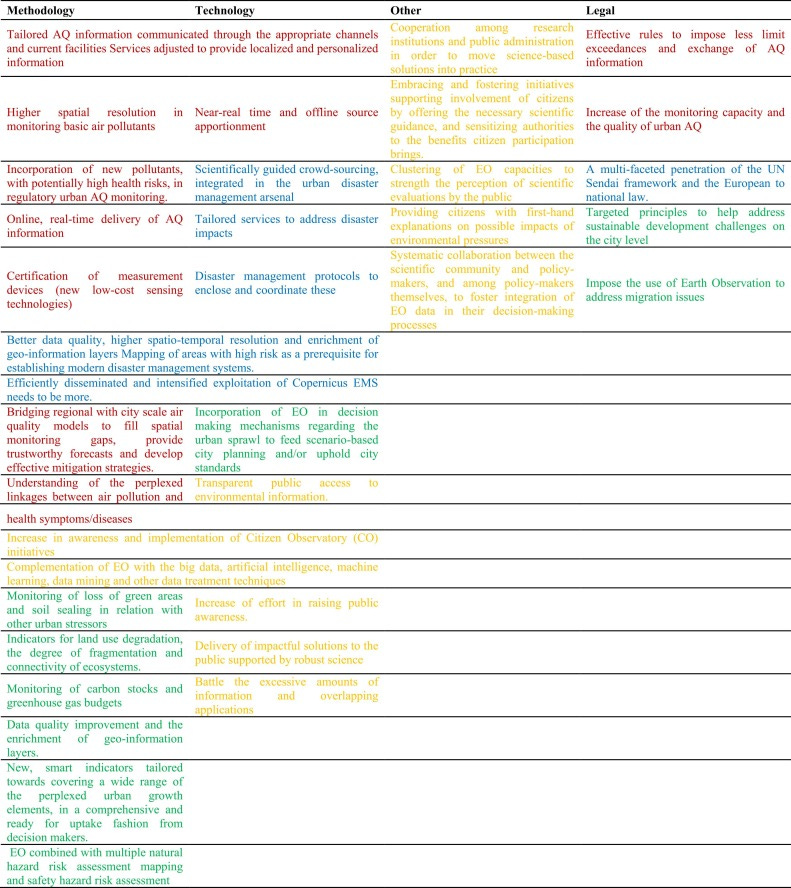Using EO to build smart cities
Before I entered the geospatial world, I worked as an engineering intern at a building science and environmental engineering company. My job was to help architects and developers modify their building designs to account for the microclimate that they were building in. Now that I work with spatial data, I’m always interested in ways that earth observation data can be used to create sustainable, healthier cities.
So this week, I chose a paper that looks at ways in which earth observation can be used to help urban planners, municipalities, city officials, and other similar stakeholders create more sustainable urban environments. You can find the paper here.
This paper is focused on a program called “SMURBS,” which stands for Smart Urban Solutions. This initiative was designed to understand how earth observation data could be used to help design and create smart cities, which according to this paper, can be defined as follows:
A smart sustainable city is an innovative city that uses ICTs and other means to improve quality of life, efficiency of urban operation and services, and competitiveness, while ensuring that it meets the needs of present and future generations with respect to economic, social, environmental as well as cultural aspects. - International Telecommunications University Recommendation
The program culminated in a portfolio of “smart city” solutions designed to highlight EO uses cases in urban planning. What’s great about this paper is the emphasis placed on stakeholder engagement. You can’t develop EO solutions for urban planners without engaging with them first. The development of the SMURBS portfolio consisted of the following steps:
Identify what exists
Understanding the needs of city stakeholders
Creating EO solutions to address these needs
Creating a portfolio of fine-tuned solutions
They further organize these goals into a six-step framework for engagement:
Co-design: create solutions that address the stakeholder’s needs while also ensuring it fits into their existing workflow
Engagement: Build trust
Capacity: Capitalize on existing investments and resources
Versatility: Build for scalability
Piloting: Garner feedback about the proposed solution
Sustainability: Ensure the product provides long-term value
Challenges currently faced by city stakeholders
One of the biggest issues is environmental challenges exacerbated by rapid urbanization. These include, but aren’t limited to, the following:
Air pollution (indoor and outdoor)
Lack of green/open space
High population density
Odour/noise pollution
Heat waves
Natural disasters
Although identifying these risks is important, what is just as important is the development of clear, easy-to-understand, digestible information. However, even the delivery of actionable insights needs to be thoughtful. It should be delivered through an existing data stream or something similar so that it doesn’t interrupt existing workflows - this is important. I liked this point; we often see organizations developing dashboards, web apps, reports, and other ways to present information, but they don’t have any place in the existing ecosystems that they claim to want to help. Something we all should consider!
They conducted a detailed assessment of user needs by talking to 250 stakeholders. Their needs were summarized in another paper, which you can find here. I may write about that paper if there’s interest, but I wanted to include the summary of needs for context.
One of the biggest challenges when developing EO solutions is creating sustainable products. Most of the applications have a one-time use, and creating bespoke applications with such a limited application is unsustainable. It’s therefore important to think about long-term applicability long before you start developing any solutions.
The SMURBS initiative published an online repository of “smart city solutions” developed with EO as the primary data source. If you want to see this portfolio, you can find it here. The paper notes that these solutions were developed using existing methodologies. However, there is a fragmentation between these initiatives, and we need to cohesively combine these products into a single, easy-to-use online portal that relevant stakeholders can access. It’s also important to make sure that the products are both modular and adaptable - which can ensure that future data products can be brought on as future applications of EO are brought forward.
Next, they talk about piloting - an important step before bringing an EO product to market. Through piloting, one can understand the obstacles and inhibitors that exist between the user and the product.
They also included a section on how to pitch and frame your solution to stakeholders, which I found to be valuable for anyone trying to bring data products to market. Here are a few things they mentioned:
showcase the benefits achieved vs. a business as usual scenario
review cost savings, or how you will limit avoidable costs
shows potential for proactive measures for the issue at hand (ex. future negative health outcomes that may arise from a lack of action)
If you are interested in this topic, they also mentioned the Earth Observations Toolkit for Sustainable Cities and Human Settlements, which is a three-part webinar series that highlight the ways in which EO can be used to create new cities and improve existing ones. Should I summarize this as well? Let me know in the comments.
Thanks for reading!



